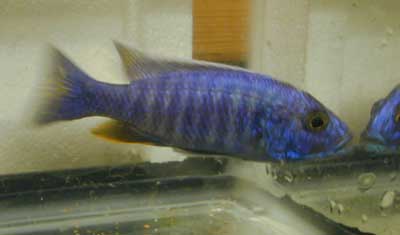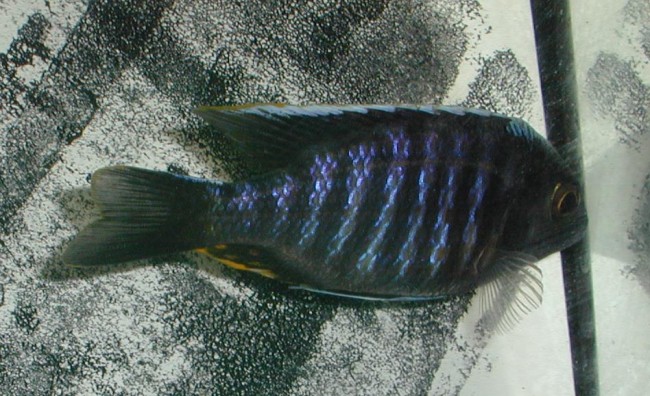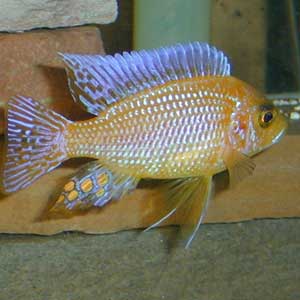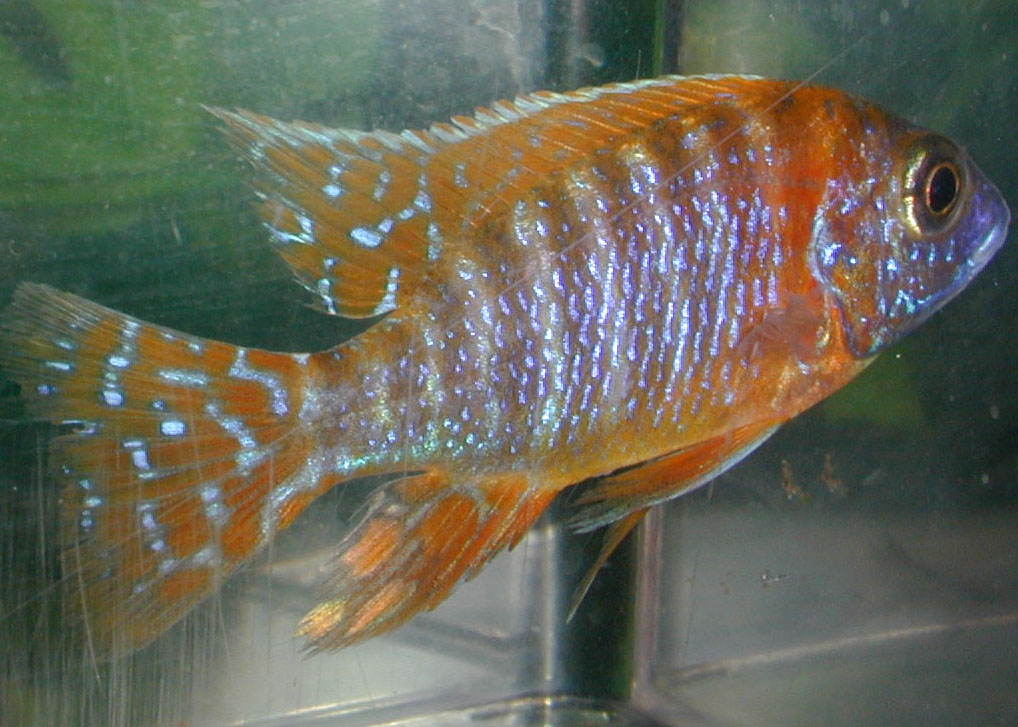Introduction:
I started keeping Peacocks (Aulonacara) and Haplochromis type fish about 5-6 years ago. I had been raising angels using RO water previously, but had just suffered through a bout of the angel fish plague. I finally decided I should be keeping fish that liked my natural water conditions rather than jump through hoops to provide water conditions that aren’t coming out of the tap. At that same time, I ran across a Peacock at the LFS that was labeled as a “Red Peacock”. It was beautiful, and I decided to start raising Peacocks even though they were a little bigger than the typical fish I had been keeping and spawning. And as they say, “The rest is history”.
I had actually started keeping and raising East African cichlids when they first started coming into the hobby in the late 1960’s. At that time most of what were available were the Mbunas. They were very colorful, but really nasty. Keeping them did provide the basic experience to encourage re-visiting the spawning of the East African maternal mouth brooders.

Blue Peacock
Breeding Strategies:
As I started to breed more and more of the Peacocks, it seemed like I gravitated towards 2 basic strategies that seemed to fit my set-up and goals. The first strategy developed as I started having breeding success. I was raising the fry in 40 gallon breeding tanks, and as they grew, I was pulling the males out as they started to color up. Eventually I decided to put my breeder male in the breeder tank with the remaining females. Then I would pull the females out of that tank as it became apparent they were carrying eggs. By doing this, I was able to keep the colony in a bare tank with very little indication of aggression by the male. There were so many females in the tank that the male was not able to focus on any one female, and that way the females were not beaten up.
As I would notice that a female was carrying eggs, I would isolate her in a 10 gallon aquarium with flower pots on the bottom, and a mass of plastic floating plants. I generally wouldn’t be in any terrific hurry to remove her from the breeder tank, and it wasn’t unusual for me to leave her in the group for up to 3 weeks. After dropping the young, I would try to leave the female in with the young for up to 2 weeks, just to build up her strength before putting her back with the male. The female carries the eggs for around 6-7 days, and then the fry for another 20-21 days. She doesn’t eat during the time she’s carrying, so she can be pretty depleted after going through the incubation period. The fry are usually okay with the female in the same tank, although for Eureka Reds, I’ve had to remove the females pretty quickly or they may make a meal of the fry.
The second strategy developed as I increased the number of species I was trying to keep. I would set-up a breeding colony in a smaller tank (i.e. a 20 long) with clay flowerpots and masses of floating plastic plants. This strategy would start with younger breeders, but follow most of the previously mentioned steps for isolating the mother and her eggs/fry. The difference was that as the fish got older, the male would tend to grow bigger than the females, and would start to become too aggressive towards the smaller females in the confined space. Once this point was reached, I would replace the male with a smaller and younger male that I had already identified as being a potential breeder. The younger and smaller male was typically not as aggressive towards the larger females, and was used for several months until he also became too large and aggressive, at which time he was also replaced by another younger and smaller male.

Blue Orchid Peacock
General Observations:
1) Start with good breeding stock – too often the fish breeder is just so happy to have a spawn that he doesn’t control which male is the father. I usually find 1-2 males in a spawn that are superior to their siblings. It doesn’t make any sense to use average males for your breeding stock. Typically, the females are pretty non-descript, so any of them will do. Over time your strain will improve if you only use the best males.
2) Realize that Peacocks and Haps can take a long time to express their colors. 6-8 months is not unusual. I once purchased a young group of 12 Super Red Empress several years ago. After spending nine months growing in my tanks, one male finally started to color up. I had just about decided that against all odds, I had picked a group of all females. I pulled him out of the tank, and in about 2 weeks another male had started to color up. Eventually, I had a normal split of males and females, but it was just one male at a time in the grow-out tank.
3) While many people are not offended by hybrids, and many of the hybrids are very attractive, don’t put males and females of different species in the same tank. Most will cross breed if given the chance. Also, it’s very difficult to tell the females of the various species apart if they get mixed together. Don’t try to sell the fry as purebred unless you know that to be a fact.
4) Enjoy the magnificent colors. I don’t know how often I’ve had visitors in my fish room ask if my fish were saltwater based on the colors displayed by the male Peacocks and Haps. They can be stunning. Also realize that some of the species of Peacocks and Haps can be pretty plain. Not every fish is going to be stunning. Pick you species and strain very carefully if your goal is to have colorful fish.
5) Don’t become overly obsessed with providing specific water conditions for your Peacocks or Haplochromides. They come from very hard water naturally, but usually will adapt to most water conditions with no problems. If you are from a soft water area of the country, you may want to do some adjusting, but that doesn’t apply to most areas.

Gold Peacock
This is the way I raise my Peacocks and Haps. There are probably many other ways of breeding these fish that work for other breeders, and my way is not the only way. It is a system that has worked for me within the confines of my particular setup and my particular goals. Hopefully, I’ve given you some new ideas that may work for your particular situation.
Denny Rogers
dennysfishroom.com
Garfield, AR
Member NWAAS


Great read Denny! If I can make it up this weekend I will definitely want to visit with you. If I wanted to send you some photos of what I have for I’d purposes and advice on some breeding issues where would I send the pictures? Thank you David Hicks